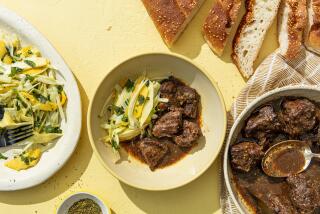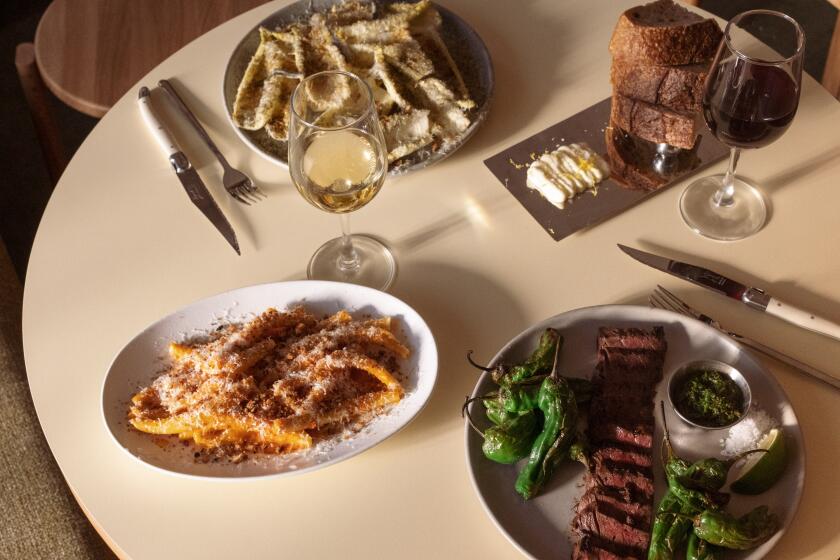Make a Hash of--Anything
I am a hash hound. No, I don’t mean narcotics. I’m talking about a classic American breakfast dish, a delicacy found at greasy spoons and roadhouses. And I do find this dish addictive. Let sophisticates have their omelets and eggs Benedict. I raise my fork for hash.
Our word “hash” comes from the French word hacher, to chop. (This is the same root from which we get that well-known chopping device, the hatchet.)
Hash is certainly a venerable dish. In the 14th century, English people were already making hache or hachy. The English diarist Samuel Pepys waxed grandiloquent about a rabbit hash he savored in 1662. During World War I, American GIs consumed a steady diet of corned beef hash, which they christened “corned Willie.”
Hash originated as a way to use up leftovers. By the 1860s, a cheap restaurant was called a “hash house” or “hashery.” This humble fare has given us numerous expressions, including “settle your hash” and “hash things over.”
The most common version of hash contains corned beef and potatoes, but hash can be prepared with an almost endless variety of ingredients. The French dote on hachis Parmentier, chopped lamb and potatoes baked with a fragrant topping of garlic, parsley and butter. In such seafaring communities as Nantucket, it was common to make fish hash. Salt cod hash was popular enough in 19th century New England to be included in Fanny Farmer’s “Boston Cooking School Cook Book.”
In my pursuit of the perfect hash, I have sampled turkey hash, venison hash and even clam hash.
But hash isn’t found only at inexpensive restaurants. It is the great common denominator, turning up in swank hotel dining rooms and at homey luncheonettes, prized by rich and poor alike. Boston’s pricey Locke-Ober Cafe, for example, is renowned for its lunchtime roast beef hash.
This sometimes humble dish has inspired some of America’s most creative chefs. Allen Susser of Chef Allen in Miami serves a rock shrimp hash with Cuban potato pancakes. Gordon Hamersley of Hamersley’s Bistro in Boston created a hash based on his illustrious roast chicken.
Chefs are divided on the proper way to chop ingredients. At Locke-Ober, the roast beef is put through a meat grinder. Lydia Shire, charismatic owner of the restaurant Biba in Boston, goes for a more kaleidoscopic look, cutting the ingredients into 1-inch pieces, so you can still recognize each.
Opinions also vary on the proper flavoring. The basic ingredients are onions, meat and potatoes. Rural New Englanders added cooked beets to the mixture to make that Yankee classic, red flannel hash. Fannie Farmer flavored her salt cod hash with a rather un-Yankee combination of tomatoes and garlic.
Hash is a protean food, compelling at breakfast, comforting at lunch and unexpectedly satisfying for supper. The basic formula can be applied to almost any leftover. Good hash is like an impressionist painting: a marriage of individual flavors in a bright, harmonious whole. The following recipe can be made with any type of meat, including leftover steak or roast beef.
Here’s a recipe from my bachelor days, made with the steak and potatoes that a date with a small appetite would leave and that I’d turn into breakfast the next morning.
CHEAP DATE HASH
2 tablespoons butter
1 onion, finely chopped
2 cloves garlic, minced
1/2 red or green bell pepper, cored, seeded and diced
2 stalks celery, finely chopped
2 cups 1/2-inch-diced cooked roast beef, steak or other meat
2 cups 1/2-inch-diced peeled cooked boiling potatoes
1 cup chicken or beef stock or water
2 teaspoons Worcestershire sauce or to taste
1 to 2 teaspoons hot pepper sauce or to taste
1/4 cup chopped fresh parsley
Salt, freshly ground black pepper
2 to 4 poached or fried eggs, optional
Heat butter in large nonstick skillet. Add onion, garlic, bell pepper and celery. Cook over medium heat until lightly browned, about 5 minutes.
Add roast beef, potatoes, stock, Worcestershire and hot pepper sauces and 2 tablespoons parsley. Increase heat to high and cook hash, stirring occasionally, until most of liquid has evaporated and meat is very tender, 10 to 15 minutes.
Just before serving, correct seasoning, adding salt, pepper and hot pepper or Worcestershire sauces to taste. Add remaining 2 tablespoons parsley. Serve hash with poached eggs on top.
2 servings. Each serving, without eggs:
521 calories; 864 mg sodium; 111 mg cholesterol; 29 grams fat; 36 grams carbohydrates; 29 grams protein; 1.27 grams fiber.
More to Read
Eat your way across L.A.
Get our weekly Tasting Notes newsletter for reviews, news and more.
You may occasionally receive promotional content from the Los Angeles Times.










